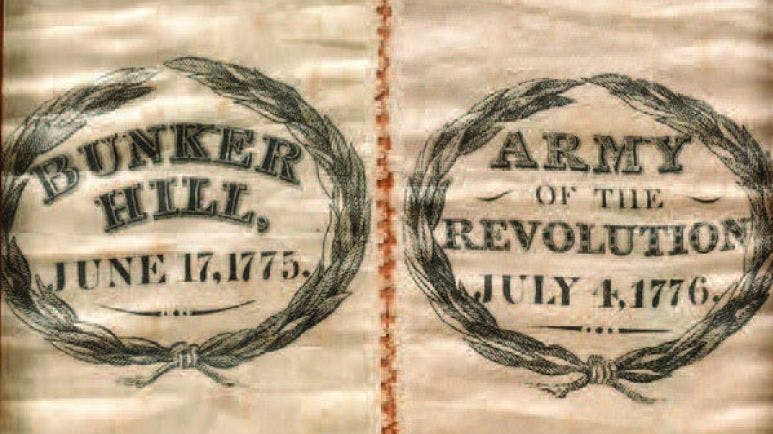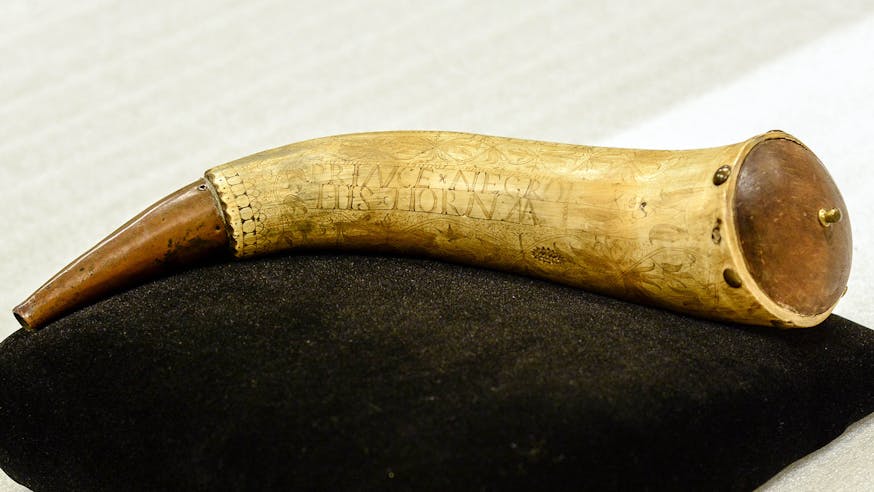Virtually Tour the Tomb of the Unknown Revolutionary War Soldier
May 25, 2020Just two blocks from the Museum of the American Revolution is a moving memorial to our Revolutionary heritage. The Tomb of the Unknown Revolutionary War Soldier stands in Washington Square Park, under tall trees down a flag-lined walk. This Memorial Day, as we remember fallen Americans, it is a place worth visiting, even if just virtually.

Washington Square Park is a bucolic green space in the heart of Philadelphia. It has been parkland since the creation of the city and was included in William Penn’s 1682 plans as the Southeast Square. Beneath its sod, though, lie thousands of burials. Beginning in the eighteenth century, enslaved and free African Americans, the city’s poor, soldiers, yellow fever victims, and lost souls ended up in the square as it became a “potter’s field” – a place for burying bodies no one claimed and people too poor to pay for a churchyard interment. Today, it’s a beautiful place to sit and reflect on the meaning of all of these lives. What did they hope America would become? How did they want to be remembered?
During the Revolutionary War, the Southeast Square (not yet named for Washington) became a military cemetery and the final resting place for thousands of soldiers – American and British – who died of wounds and disease. On a spring day in 1777, when the Revolution’s prospects were still grim, Massachusetts Congressman and future President John Adams toured the square. “I have spent an Hour, this Morning,” he wrote, “in the Congregation of the dead. I took a Walk into the Potters Field, a burying Ground between the new stone Prison, and the Hospital, and I never in my whole Life was affected so with so much Melancholly. The Graves of the soldiers, who have been buried, in this Ground, from the Hospital and bettering House… are enough to make the Heart of stone to melt away.”
In the twentieth century, the publishing houses fronting the square took the improvement of the park as their new cause. Beautified and landscaped, it became hard to tell the land had ever been a burial ground. But as part of a new project in 1956 to erect a Tomb of the Unknown Revolutionary War Soldier, archaeologists excavated a handful of graves and selected one – apparently a military-aged man – to be moved to the monument on the western side of the square. The man’s skeleton gave clues to his life: he was stocky, perhaps twenty years old, and with a pronounced “plow wound” in his skull, perhaps from an earlier wound that had only injured him. Though buried in an oak coffin and wrapped in a shroud, no other artifacts survived to prove his affiliation with the Revolutionary (or perhaps even the British) army.

This Tomb of the Unknown Revolutionary War Soldier, where the remains now rest, also includes a statue of Washington, an eternal flame, and various inscriptions. It is a moving place, perhaps most of all because it honors the everyday people of the American Revolution. It is this sort of story that we lift up at the Museum of the American Revolution. What was life like for the women who followed eighteenth-century armies? For African Americans who seized their freedom during the war? For soldiers and sailors who fought for all their own reasons? Thousands of these people lay buried near the Tomb in unmarked graves.
And above the tomb are these profound words: Freedom is a light for which many men have died in darkness.
Continue to virtually walk through Washington Square Park and to the Tomb of the Unknown Revolutionary War Soldier with Google Street View.
Follow the Museum @AmRevMuseum on Facebook, Instagram, and Twitter for daily content and updates.
Learn More

Craft Your Own Commemorative Ribbon for Memorial Day

Color a Revolutionary Thank You for Memorial Day
